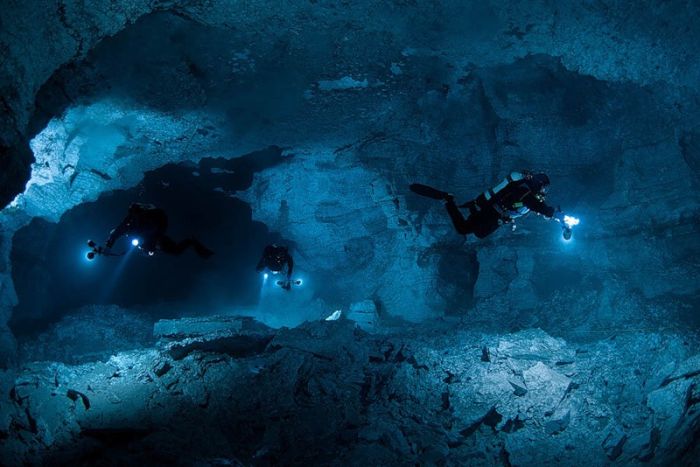|
|
Cave Diving
|
The number of sites where standard diving dress could be used is clearly limited and there was little further progress before the outbreak of World War II reduced the caving community considerably. However, the rapid development of underwater warfare through the war made a lot of surplus equipment available. The CDG re-formed in 1946 and progress was rapid. Typical equipment at this time was a frogman rubber diving suit for insulation (water temperature in the UK is typically 4 °C), an oxygen diving cylinder, soda lime absorbent canister and counter-lung comprising a rebreather air system and an "AFLOLAUN," meaning "Apparatus For Laying Out Line And Underwater Navigation." The AFLOLAUN consisted of lights, line-reel, compass, notebook (for the survey), batteries, and more.
Progress was typically by "bottom walking", as this was considered less dangerous than swimming (note the absence of buoyancy controls). The use of oxygen put a depth limit on the dive, which was considerably mitigated by the extended dive duration. This was the normal diving equipment and methods until approximately 1960 when new techniques using wetsuits (which provide both insulation and buoyancy compensation), twin open-circuit SCUBA air systems the development of side mounting cylinders, helmet-mounted lights and free-swimming with fins. The increasing capacity and pressure rating of air bottles also extended dive durations.
|
|









